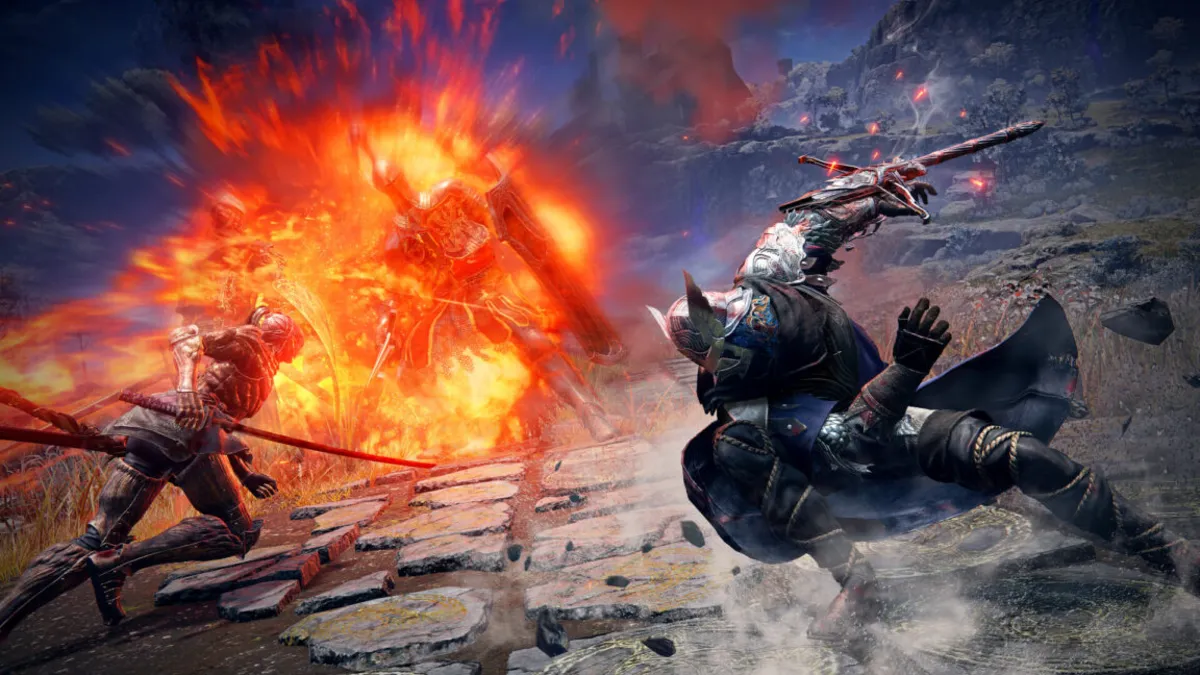
At this point, Elden Ring has carved a niche for itself in the gaming world, renowned for its epic sense of scale. It offers players countless hours of meticulous exploration, gradual character progression, and challenging enemy encounters that demand careful strategy and attention. However, the transition to a semi-randomized multiplayer action game spin-off, set against strict time limits and a continually encroaching boundary, might seem unconventional. Surprisingly, Elden Ring: Nightreign manages to blend these elements successfully.
Elden Ring: Nightreign distills the essence of the original game into fast-paced sessions, each lasting less than an hour. This spin-off captures the flavor of a full Elden Ring playthrough while condensing gameplay into zippy runs that are perfect for repeated play with friends. The initial moments of each Nightreign run draw a humorous parallel to Fortnite, with players dropping into the map by hanging off the talons of a massive spectral eagle.
Upon landing, players must stay within a circular safe zone, which gradually shrinks over two quick in-game days. This mechanic forces teams toward an eventual encounter with a mini-boss at the end of each day. Surviving both days leads to a face-off with one of several punishing Nightlords, chosen at the beginning of the run. Fans of the original Elden Ring will recognize the game’s fallen world aesthetic, featuring familiar enemies and items, while experiencing a gameplay pace dictated by the encroaching circle of deadly blue flame.
The gameplay in Elden Ring: Nightreign deviates significantly from the slower-paced exploration of its predecessor. Instead of methodically searching for hidden secrets, players rush between highlighted points of interest on the map, aiming to gather experience points and powerful items necessary for tackling formidable bosses. Key changes to the Elden Ring formula enhance this new speed-focused gameplay:
Unlimited surge sprint: Players can quickly traverse the map, allowing for rapid movement between locations. Springy wall jumps: This mechanic enables characters to scale high cliffs and walls, adding a dynamic element to exploration. Jump pads: These provide quick elevation, while the absence of fall damage encourages daring descents into valleys.While battles echo the rhythm of the original Elden Ring, managing stamina for attacking, blocking, and dodging remains crucial. However, the action-oriented design introduces powerful, class-specific skills and ultimate attacks that recharge over time, making encounters feel more exhilarating.
In Elden Ring: Nightreign, players can choose from eight distinct classes, each embodying traditional archetypes of action-adventure games: tanks, mages, defensive specialists, and agile dodgers. I personally gravitated towards the Ironeye class, which boasts an unlimited supply of arrows for consistent damage against aerial and evasive bosses while maintaining a safe distance from attacks.
The game’s faster-paced design allows players to experiment with various classes without committing to one for hundreds of hours. This flexibility encourages players to explore different combinations with their teammates across numerous bite-sized runs. As you progress, you'll become familiar with the well-designed map, which features distinct regions and landmarks. Though enemies and items vary with each run, players will quickly learn advantageous routes and when to engage or flee.
Success in Elden Ring: Nightreign hinges on a mix of luck and strategy. Some runs may yield subpar weapon drops or weak enemies, hindering your ability to build power for the final encounters. Conversely, you could stumble upon a powerful weapon that drastically simplifies boss fights. Players must also navigate the dangers of greed, as doubling back for lucrative encounters could lead to a swift demise, engulfed by the blue flames or falling off cliffs due to missteps, resulting in lost levels and momentum upon respawn.
Between runs, players can equip relics that provide permanent stat boosts to enhance their classes. Ultimately, success is about perseverance—staying committed until you discover the right blend of luck and execution to conquer the Nightlords.
While Elden Ring: Nightreign includes a single-player mode, it is explicitly designed for groups of three players. The trio dynamic allows one player to draw enemy fire while the others flank for strategic advantages. Reviving downed teammates can lead to amusing moments, as players must repeatedly strike their fallen comrades to bring them back into the fray.
Effective communication is vital for both exploration and combat, especially as the map shrinks. Those not playing with friends will rely on a somewhat clunky system of pinning points of interest on the map. However, during my pre-release experience, I encountered significant lag issues that disrupted gameplay, leading to frustrating moments where I was caught off guard by enemies due to freezing screens.
Despite these technical hiccups, Elden Ring: Nightreign successfully translates the core mechanics of the beloved franchise into a fast-paced, action-packed experience. While it may not be the epic sequel that long-time Soulsborne fans yearn for, it certainly offers a compelling twist on the adventure gameplay that Elden Ring fans have come to cherish.